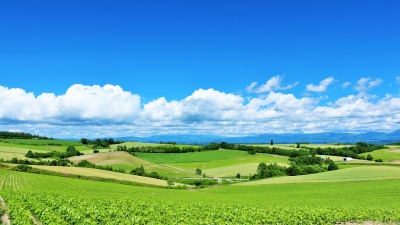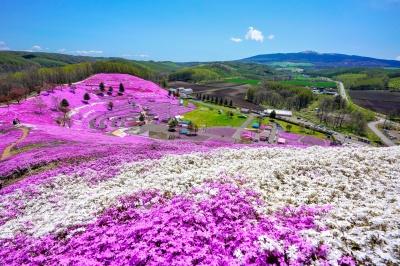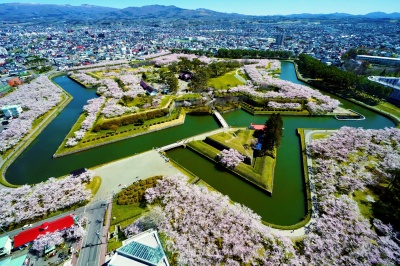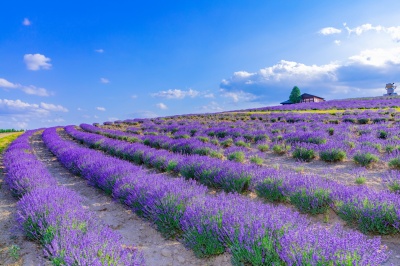Experiencing Eastern Hokkaido through the eyes of a world-renowned chef

Like many people, the COVID19 pandemic has given Ishii a chance to reset and rethink his past experiences. Mr. Ishii returned to Japan in December 2020 after living in various countries around the world for over 20 years. We spoke to Mr. Ishii about Hokkaido's role in Japanese cuisine during his solo travels around Japan to meet the farmers, fishermen, and friends who form the backbone of Japanese cuisine.
- * Please note that the text shown on this page includes machine translations.
Profile
Japanese food chef
Mr. Yoshinori Ishii
Started his career as a chef in Kyoto. After traveling around the world and working as the head chef at the Japanese Embassy in the United Nations in Geneva, he went on to demonstrate his skills at the world-famous MORIMOTO in New York. His Japanese restaurant UMU (Umu Nama) in London is known for bringing Kyoto-style kaiseki cuisine to the UK, helping it earn two Michelin stars for five consecutive years. He is said to be the most successful Japanese chef overseas.
Go on a culinary adventure with ingredients
“In Hokkaido, I felt free. I could visit the places I wanted, talk to the locals, and take a look at the prefecture from the perspective of a chef.” For Ishii, Hokkaido is especially interesting as he maintains that it has not yet been commercialized to the same extent as other places in Japan. “For better or for worse, Hokkaido is not a global brand yet in culinary circles. I think there are still so many hidden treasures, so many ingredients that have not yet made it to the tables of New York, London, or even Tokyo.” He noticed this when searching the Internet for where to visit. “There is this gap between what comes up on Internet searches and who you meet when on the ground in Hokkaido. There are certain people, certain ingredients that have not made it onto the Internet yet. This made my trip a culinary adventure.”
Fishermen are an extension of cooking
Arriving in Eastern Hokkaido, he used his connections and initiatives to meet up and talk to as many locals as possible. The locals seemed eager to oblige and show him around, first taking him to the must-visit spot in the area: “We went to Shiretoko Peninsula National Park to see the nature and wildlife. Even though it was very windy that day, the local fishermen brought me to see the spectacular nature.” Seeing the land as it is another important aspect in understanding its ingredients. “Sometimes I like to just play tourist, and Shiretoko is a perfect place for that.”
Talking to Ishii, we are quick to notice a recurring theme: fishing and the people that engage in the craft. An avid angler himself, Ishii always makes it a point to meet local fishermen. “I have been that way for as long as I can remember, even during my times in Europe. As a chef, I need to know where my ingredients come from, and I quickly came to view fishermen as an extension of my cooking. I started talking to them like family.” For Ishii, it is important to dive deep into their lives. “I try to become part of the team. Of course, with limited time this can be difficult. But when I am in a fishing region, I always take a couple of days to go out to sea with them, take part in their everyday lives.” Indeed, for Ishii, this was the highlight of the trip.
“The surrounding nature of the Shiretoko Peninsula makes fishing in this region a special experience.” Of course, the social aspect is also very important to Ishii. “It is important to talk with fishermen”, he says. “Around the Shiretoko region of Eastern Hokkaido, there are some truly inspiring local fishermen.” One of the people Yoshinori Ishii met with is Tsuyonori Hayashi, who heads a local organization of likeminded young fishermen called Hasshin-kai. “Hayashi has an attitude that is rare even in Europe. He sees fishing not as a business, but as something more holistic.” Indeed, Hasshin-kai is known in the region for challenging the ways of the past, for instance by focusing on fish that were not generally considered hot sellers to prevent the overfishing of salmon. “The organization is truly special, and I promised myself and Hayashi to help him from here on out.” In the area, local fishermen have been starting to offer students and tourists the opportunity to come with them on their boat to experience fishing out on the open sea, meaning that it has become accessible even if you do not happen to be a famous chef.
Conversations with locals
Indeed, it is through conversations with inspiring locals such as Hayashi that Ishii sources new ingredients for his cooking. “I always try to collaborate with local fishermen or farmers, foregoing the middleman and trying to establish a direct connection. Similar to how the fishermen that I met are trying to innovate in their field, I try to transfer that mindset into my cooking.”
Back on land, Ishii’s journey would lead him to one of the most famous local ingredients – salmon. “I went to the local Shibetsu Salmon Science Museum to learn about the history of fishing in this region.” Here he met with Masaki Ichimura, who works as the head of the museum. Ishii sums up his visit: “It was fascinating to learn about the various research activities that are being undertaken to realize a more sustainable way to fish salmon, as well as the breadth of the locals’ activities. For instance, I was surprised about another project in which they are breeding native sturgeon in Hokkaido. This gave me another potential idea for Tachikawa in the future.” Ishii mentioned sturgeon specifically as one of the ingredients he rediscovered on this trip to Hokkaido.
Of course, whether you are a chef or not, it is a highlight of any trip to indulge in the local delicacies. For Ishii, this meant numerous stops to any place willing to give him a taste of the region. He visiting a dried salmon company to sample an innovative take on the popular fish, before making it a point to the taste the local konbu at Rausu, which is known for a particular grade of the kelp that is known to be of the highest quality. “I just had to try the Konbu, which was so good I also indulged in some local Ramen made from it.” Another stop was the local inn Minenoyu, which offers a truly exhaustive seafood selection, almost entirely caught in the area. “I recommend anybody visiting to stop here, even if just for the food. The freshness is simply unparalleled.” Aside from food, the onsite hot spring is another highlight, allowing for a relaxing soak after taking in the breathtaking landscape of the area.
Hokkaido's role in Japanese cuisine
However, despite all the highlights of Eastern Hokkaido, Ishii always brings the conversation back to food. This led us to the following question: How does Yoshinori Ishii see Hokkaido, its ingredients, and its role in Japanese cuisine? “Well, traditionally most Japanese chefs would point to Kombu, which is of course essential to making Dashi and thus forms the base of most Japanese dishes.” Indeed, over 90% of Kombu comes from Hokkaido, and many people say that this means Hokkaido is at the core of Japanese cuisine. “Of course, the Konbu I tasted at Rausu was incredible, but focusing exclusively on Konbu when talking about Hokkaido is a view that is too narrow. To me, a country’s food comes from the strength of its localities.”
He goes on to explain: “When I think about Japanese cooking, I don’t think about a certain frame, such as equating Hokkaido with Konbu. Such thinking only limits its potential.” Coming from a chef that is famous for making the most traditional food Japan has to offer, Kyoto’s kaiseki cuisine, this is somewhat of a curveball. “Going back into Japan’s many heartlands of primary industry, I reconnected to how these localities form the true core of our country’s cooking. Hokkaido is no exception. When you are here, you see what you have right in front of you, you try to utilize what the land gives you. This is the true meaning of local ingredients.”
Try to innovate
“I believe that this is a very natural way of going about things, and one that I want to reflect in my cooking as well. On this trip I saw the potential of sturgeon. Also, lamb was another ingredient that I began to think about.” Indeed, while not a traditionally Japanese ingredient, lamb is unmistakably part of Hokkaido’s identity today. “For me, Japanese cuisine is constantly evolving, and needs to reflect the true currents of its land. In Hokkaido, that includes lamb. As a frontier land, Hokkaido seems to always be changing at a rapid pace. That is why it is important to visit, to understand how locals think about certain ingredients at any given moment in time.” Ishii’s view thus reflects a more updated role for Hokkaido in Japanese cuisine. “This trip to Hokkaido taught me many things. Through indulging in the beautiful nature of Eastern Hokkaido, I gained a deeper appreciated of the land that produces these amazing ingredients, and I am looking forward to putting them to good use in my cooking.” We for one can’t wait to try what he comes up with.
Ranking of popular articles
- Hokkaido Summer Travel Guide

- https://www.visit-hokkaido.jp/en/feature/travelguide_summer
- Hokkaido Spring Travel Guide

- https://www.visit-hokkaido.jp/en/feature/travelguide_spring
- Here are the recommended cherry blossom viewing spots!

- https://www.visit-hokkaido.jp/en/feature/sakura
- Best Places to View Flowers in Hokkaido vol. 1

- https://www.visit-hokkaido.jp/en/feature/best-places-to-view-flowers-in-hokkaido-vol-1
- When is the best time to see lavender? Recommended Lavender Spots in Hokkaido

- https://www.visit-hokkaido.jp/en/feature/lavender





